There?s never been a better time to play a fighting game. Tekken 7 is in full swing, Injustice 2 is getting bigger every day, and Dragonball FighterZ as well as SOULCALIBUR VI are hot as hell right now. Not to mention Street Fighter V, Killer Instinct, King of Fighters, and so much more. Go beat your friends up! While you?re at it, learn some combos.
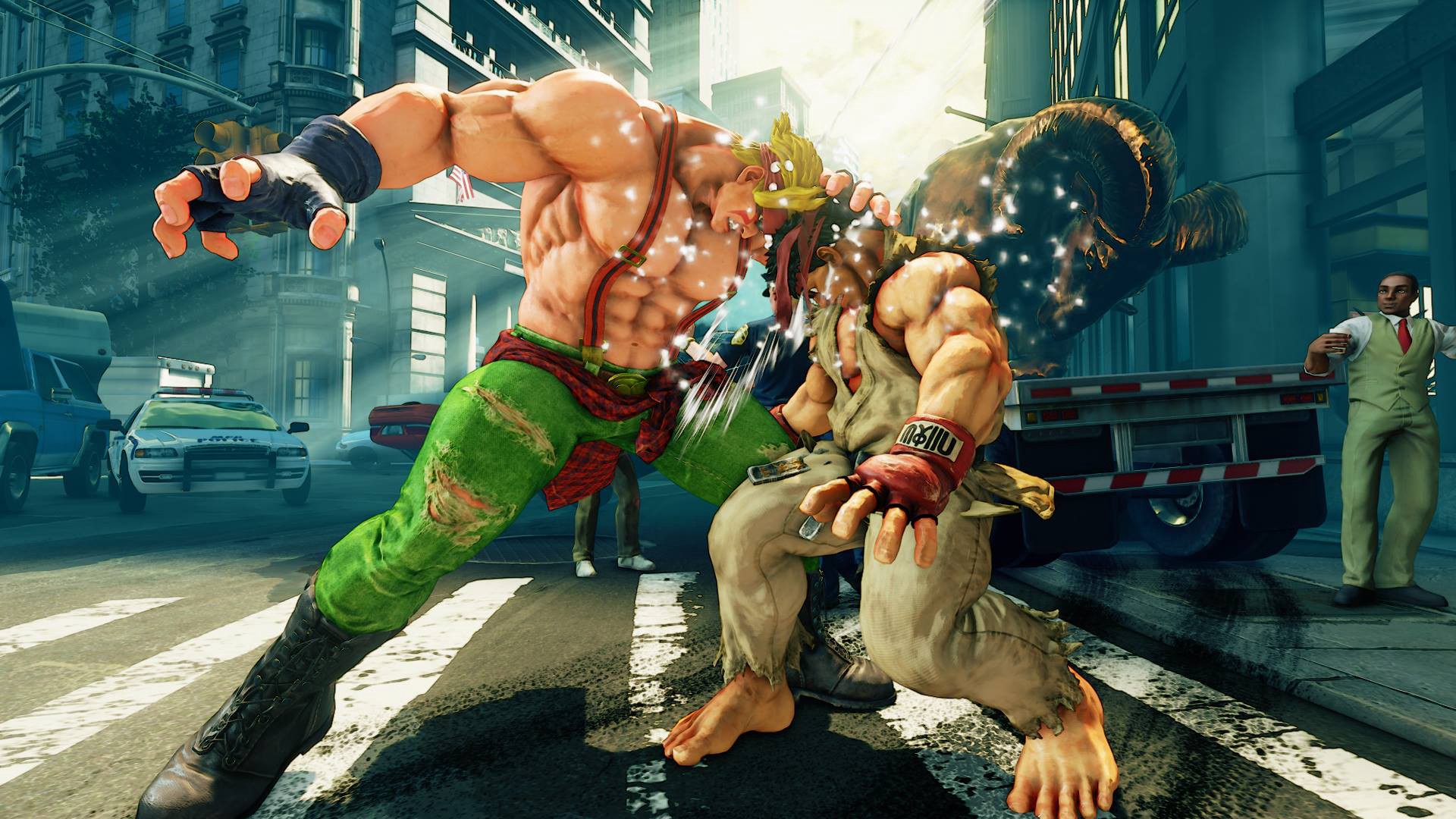
Combos?
You bet! We?re gonna talk about a series of moves that are inescapable, done in succession, that?ll make your opponent either use an escape option, or just take it. Typically these are moves that are input in a very specific rhythm. Each game has it?s own timing quirks and system mechanics, so for your specific game, find a link in the article or google for a reference wiki or resource of your fighting game?s choice.
Here?s some resources:
SFV(1/2) | TEKKEN 7 (1/2)| KILLER INSTINCT | ANIME | KING OF FIGHTERS
Wait a second. I can?t read any of this!
A lot of fighting games have combos, and a lot of combos feel vastly different from one another. And the games themselves sometimes don?t do the job of showing how. Modern fighters typically have trials for combos, featuring pictures representing buttons and motions. While this is nice, fighting games live and die on their community, and a community lives and dies on the spread of knowledge. So you have to be able to type combos to share knowledge, quicker than making a picture.
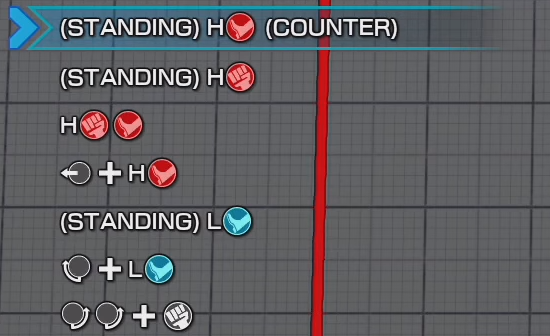 A trial combo as seen in Street Fighter V.
A trial combo as seen in Street Fighter V.
So in order to share information about combos fast and effectively, you need a code ? a language. There are three main notations (ways to write combos) for the majority of all fighting games. In this, I will introduce each style, the basics of each, advantages and disadvantages, and what games it is typically used for and why.
(The combo used is a trial combo for Akuma, originally in SFV, but loosely copied to match notation. I?ll elaborate in category!)
Example Combo: j.HK, b.HP xx hcb+HP
Games that use it:
Most Capcom games (Street Fighter, Marvel Vs. Capcom, Darkstalkers, ARIKA games, etc.) and King of Fighters.
Positives of ?Standard Notation?:
The system has been around for years, so the games grew with the notation and vice-versa. An example would be how j.HK (jumping HEAVY KICK) means that you jump and at some point do a heavy kick. That?s because in many of these games, you?re limited in terms of how many moves you can do in the air, so it?s implied that you?d hit the target with the one move you do in that state. So you could say it?s fitting.
So states are tied to moves (j. for jumping, c. for crouching, etc.) and that clears things up, but this notation also shines with spacial learning. Let me explain: the whole thing is built on circles. If you think of going all the way around a stick, it?s sort of like 360 degrees around a circle. And everyone knows what a circle is, so thinking of half of one or a quarter of one make sense! So as long as you know the abbreviations to the motions, you can pretty quickly visualize the action (qcf for quarter circle forward, hcb for half circle back, etc?).
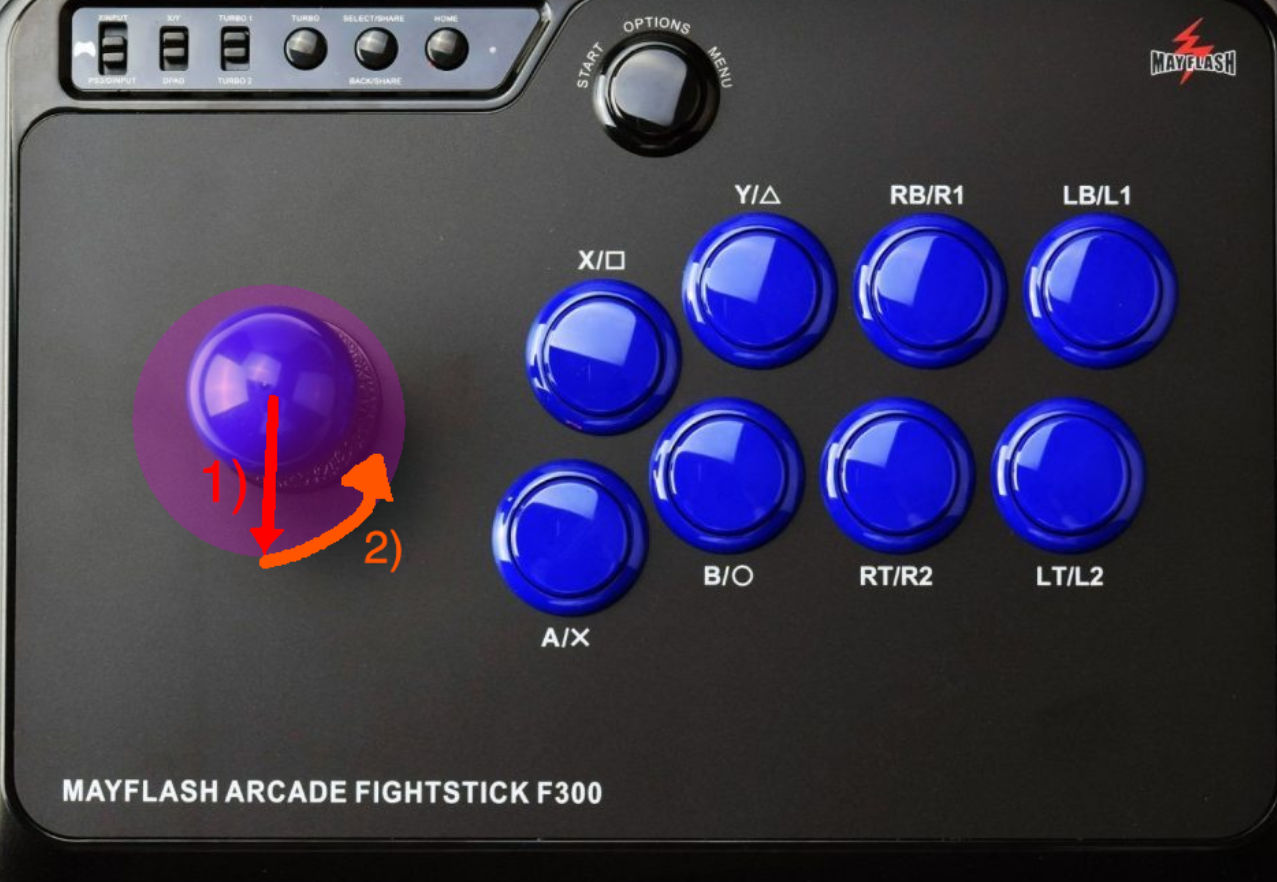 In this diagram, qcf is input. So a qcf+HP would be that motion, plus a heavy punch at the end of the motion.
In this diagram, qcf is input. So a qcf+HP would be that motion, plus a heavy punch at the end of the motion.
Negatives of ?Standard Notation?:
Because it?s been around so long, it?s aged a little poorly. Originally, rather than specifying HP or LK (heavy punch or light kick) they used the early Street Fighter names.
The original street fighter names vs. simpler notation:
LP, MP, HP, LK, MK, HK (light, medium, heavy ? punch, kick)
Jab, Strong, Fierce, Short, Forward, Roundhouse (in the same order as above)
You don?t have to worry about that. It?s just to illustrate that this system?s been around for a long while, so you might run into people still used to saying these terms.
There?s also some non-intuitive phrases like ?xx? for cancel. And personally it makes some longer combos look a little messy.
An example of a longer combo:
st. MP, cr. HP xx HP shoryu xx CA
?Shoryu? for example, is a little messy if you don?t know the motion, and it?s not based on circles like the others, but many characters have one. It?s also abbreviated to SRK often, so it?s a little non-intuitive. CA is an abbreviation too, which may lead to confusion especially if you?ve only heard the catch-all phrase: supers.
Opinions and Final Notes on ?Standard Notation?:
It?s intuitive to a lot of players, but there?s still a lot of bumps and rust to it. If you?re okay with learning some stick-movement abbreviations like HCB and SRK, you?ll do fine. The games that use this notation make enough sense once you get over the learning curves, but surely there must be something more detailed out there!
?Numpad Notation?
Example Combo: j.D, 4B, 63214B
Games that use it:
Every anime-style fighter, many niche small fighting games. Soulcalibur even use a modified version of it, but we?ll get to that later.
(Thanks to it being so popular with the anime FGC scene, it?s often called ?Anime Notation?)
Positives of ?Numpad Notation?:
It?s universal, it?s logical and it?s clear. It can be entirely explained in one small picture. Don?t believe me? Look at this? I?ll wait.
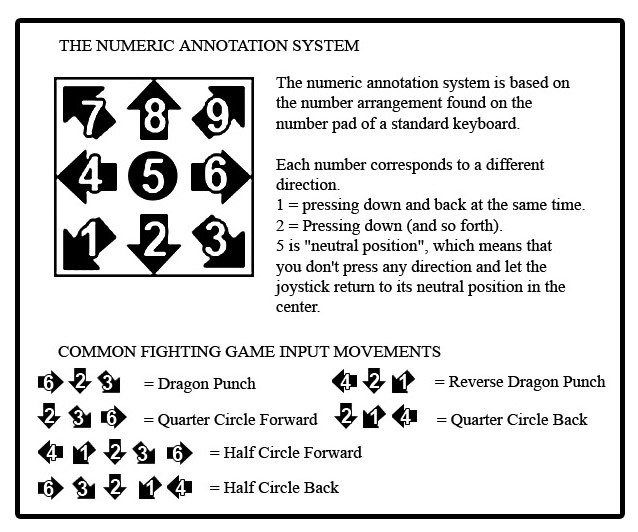 See?
See?
It?s crazy. It even has those motions I warned about in the standard notation section, but translated for easy conversion. It also mentions nothing about the moves, so any unique attack system fits into it like a glove. Guilty Gear for example has Kick (K), Punch (P), Slash (S), Heavy Slash (HS), and Dust (D), so ?down, down+forward, forward+slash? would simply be 236S.
If you can get past having to think about how your keypad looks all the time, you?ll get used to it and it?ll be second nature. It also means things that are very hard to describe motion-wise are suddenly simple to communicate. There?s a common super motion, for example that is written like so: 632146P
That?s crazy right? Well you know exactly how the stick moves, so long as you break it down piece by piece. You just start at the first number and follow where it goes on the number pad.
Negatives of ?Numpad Notation?:
The notation in between varies slightly, and it isn?t the hardest to decipher, but it?s important to learn that >> or -> both can mean cancel into the next move. Real minor thing, but a little non-intuitive.
Being new to fighting games might also mean a difficult time with side swaps. Every combo, when written in in numpad notation, assumes you?re on the left side of the screen.
Also, being as universal as it is, it lacks specialization. So in the case of oddball games, 3D fighters, and the most ?niche? of fighters, it may feel incomplete for the needs of the game.
And while everything can be broken down to it?s base elements, it can come off as looking VERY dense.
An example of a longer combo:
(2A) 5B 2B 5C 2C 3C j.ABC dj.BC airdash j.C AT
This is a combo from Sion in Melty Blood. This is one of her most basic combos. It?s a lot to take in on first glance, but of course, can be broken down. Parentheses mean it?s optional, j. is jumping, meaning jump then do that move, dj. is double jump, and it?s a little clunky, but airdash is written out. This is fairly common, though you may also see ?66?. Oh yeah, and you have to know that AT means air throw.
Opinions and Final Notes on ?Numpad Notation?:
Makes a lot of sense, right? Breaks everything down to it?s finest parts. It looks a little dense, but cracking into combos will be easier as you have the exact motions. For many games, this is the answer, because if there is no history of an alternative notation use, you might as well use the thing that just works. But there?s not enough detail, you say?
?TEKKEN Notation?
Example Combo: UF, 4, b+2, f, df, d, db, b+2
Note, that combo isn?t a very typical one. Keep reading to see a more useful one!
Games that use it:
Every TEKKEN (In the West. In Asia and basically every-non American country, they use a modified version of Numpad Notation.) Injustice and Mortal Kombat SORT OF use it, but not in the same way.
A Quick Breakdown:
This system functions very drastically different from the other notations. It?s also mainly used in the West. For most of these games in the East Asian fighting game scene, they use numpad notation. For the purpose of teaching you this ?limb-based combat? approach, I?ll be using Tekken 7 as a baseline.
You?ll notice there is a lot of terms, but don?t worry. You will never see the majority of them because your character has nothing to do with them ? a stance your character can?t use for example. Before we go any further, you?ll be needing a list of inputs.
Alright, brace yourself. This is gonna scare you a little. It?s a lot of stuff, but remember, most of it you will never touch.
Firstly, each limb is numbered, starting with left arm/punch being 1, right arm/punch being 2, left and right leg/kick being 3 and 4 respectively.
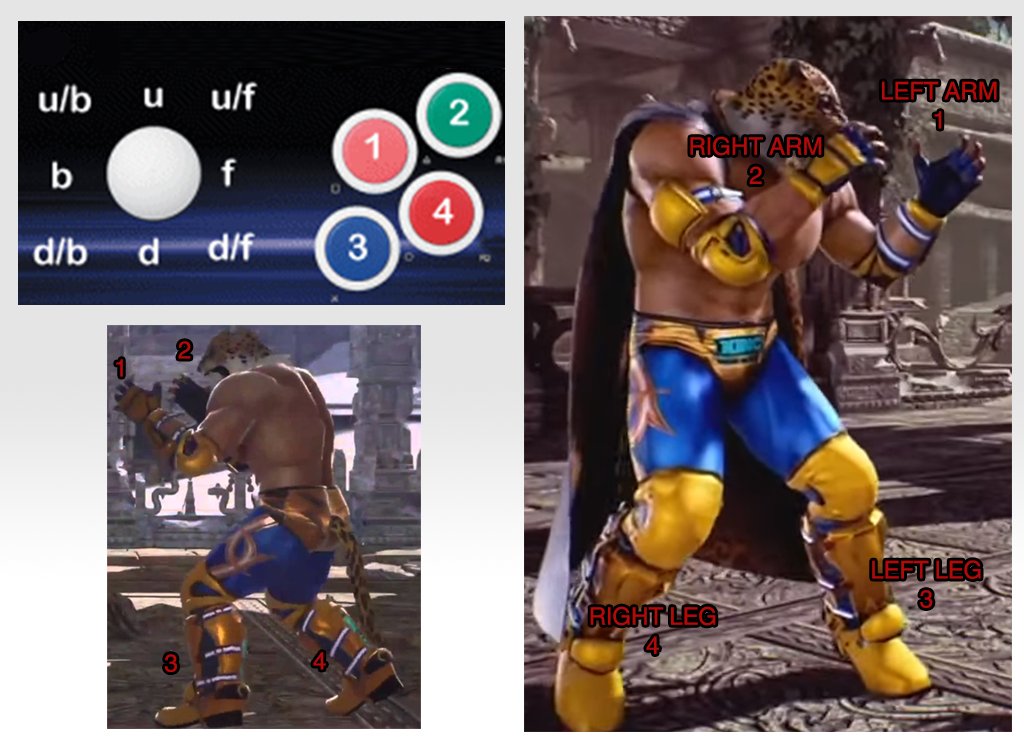 A visual aid.
A visual aid.
One button for one limb. Simple enough! This is not necessarily some huge game changer, but it?s a good association to make early. Numbers aren?t motions, they are attacks.
Additionally, another big distinction you?ll see from the command guide is the difference in capitalized and lowercase letters. This is one of those things that only applies to the 3D games in this category, but it?s very important. If it?s capitalized, it means hold it. So ?uf? means ?tap up and forward? on the stick, but ?UF? means ?hold UP and FORWARD?. The first one will sidestep you into the screen, while the other will make you jump forward.
One last important thing. Throughout combos, anything with an exclamation point (!) is signifying a change in state. The most common one for Tekken 7 is screwing attacks, written as ?S!?. This is just to be as thorough as possible and you should not let it trip you up.
So the three big things to remember: numbers are attacks based on the number assigned to the limb, lowercase means tap the direction, uppercase means hold it, and anything with an exclamation point is showing a change in state.
Positives of ?TEKKEN/8-way Notation?:
It?s EXTREMELY game specific. It?s got a ton of depth. It has very exact timing window markers, dictating precisely when to do moves. Cancelling is not much of a thing in Tekken or Soul Calibur, but in games that do have it predominantly, you would simply add in the ?cancel? notation that makes sense for your game.
This notation system leaves no questions. It?s precise and exact. And once you know the handful of abbreviations that pertain to your character, you can read combos and make your own pretty quickly.
Also, if you see a combo on a stream or a video and you note what limb it was and what direction it was in, you have some pretty quick hints to finding out the move that was used, making this system pretty fast for reference purposes.
Negatives of ?TEKKEN/8-way Notation?:
It?s a very tight and finicky system, with a lot of dense elements that are pretty off-putting. The way combos end up looking is over-explained to say the very least.
Saying a combo out loud in this notation is often a nightmare (specifically for Tekken). A simple example might be someone telling you ?f one two? is a punish. They could mean any of these:
f+1+2| f+1, 2 |F+1+2|F+1, 2|f, 1, 2|F, 1, 2
Yikes! You have to be specific. And if the combo is written in an unconventional way, it can be completely indecipherable.
The system itself limits the games to four buttons, one per limb, but that?s not a huge detractor. And going from one of these games to another is harder than you might think, as even though they share the limb-based system, they may have completely different feeling timing windows from series to series.
An example of a longer (real) combo:
df+2, f+1+2, 4, f+2, 3, 4 S!, dash f+2, 3, 4
The above combo is the bread and butter launcher combo from Jozie Rizal in Tekken 7. The df+2 is an uppercut launcher, but you can swap this launcher out with many others. Each comma, you can substitute ?then? while reading. It?s a lot to take in, but it?s very exact.
Opinions and Final Notes on ?TEKKEN Notation?:
It?s specialized and flawed. It gets the job done and its what the community has used for a very long time, so it?s probably not going anywhere. Again, it differs wildly between games of this type, but if you can handle it for long enough, you?ll see how specialized and optimized it can get.
ALSO! Frame data is pretty much the same in every game. BUT in TEKKEN, AND in SOULCALIBUR, people say impact frames and not startup frames. The way to think of it is ?my hopkick has 15 frames until it impacts my opponent? so you?d just say ?my hopkick is i15?.
ADDENDUM:
As mentioned before, SOULCALIBUR uses a hybrid between some of the elements above and numpad. Primarily it?s not limbs, but more like weaponized attack ranges and swing types. Injustice is close, but has no 3D movement. I focused mostly on the base elements of the weirder systems.
Hey, thanks for reading and I hope this helped. I?m Moofin on Twitter and everywhere else. Hit me up if I made a mistake. Take it easy.
![]()
This article was written by Super Jump contributor, Moofin. Please check out his work and follow him on Medium.
 Copyright 2017 Super Jump. Made with love.
Copyright 2017 Super Jump. Made with love.


